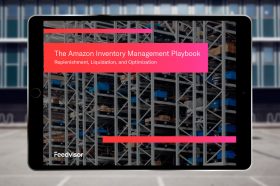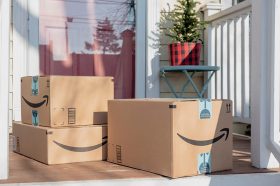Resources - Blog
7 Reasons Private Label Sellers Need Dynamic Pricing

Stay on top of the latest e-commerce and marketplace trends.
The seemingly mass migration into the private label space makes sense from a monetary perspective — private label products grant you the opportunity to drive incremental revenue and create your own, bespoke private label brand that can avoid direct competition. As a result, you gain a stake in the race for private label market share, which has been prioritized by Amazon over the last year or so, given its private label line of more than 140 brands.
However, if you are considering exploring the private label space on Amazon, or have already expanded into that market, a critical piece of your success will derive from putting a dynamic pricing strategy in place. However, before we explain why dynamic pricing is pivotal for e-commerce success, we will break down what exactly dynamic pricing is.
Dynamic pricing is a strategy in which product prices continually adjust in response to current market conditions and real-time supply and demand. The more competitive the market is, the more price changes will occur. On Amazon, for example, prices change every few minutes, fueled by the intense competition between sellers, as well as changes in buyer demand and price elasticity. Before dynamic pricing, static prices were the norm because the data and machine-learning capabilities did not exist for people to reference or leverage to perform competitive research or find the optimal price points for their products.
A helpful example is thinking of dynamic pricing in financial terms and comparing it to the stock market. The stock market operates on the basis of share values increasing and declining. Like dynamic prices, the value of shares is calculated by considering things like demand, the specific company, the state of the economy, and so on. Like shares, prices are adjusted to maximize your return. In this article, we dissect seven reasons why you need a dynamic pricing strategy if you are a private label seller or are seriously considering adding private label SKUs to your catalog in the future.
How Dynamic Pricing Can Transform Your Bottom Line
1. Avoid leaving money on the table.
In many cases, sellers only change the prices of their private label products once a month or once per quarter, if ever, so they do not know how that price is being received by the Amazon marketplace specifically.
Those who are slow to adjust their product prices are, in turn, behind when it comes to changes in market conditions and end up losing out on increased profit potential. By testing various prices and measuring demand as a result, dynamic pricing allows you to prevent leaving money up for grabs.
2. Better manage your time and your catalog.
As mentioned, private label products have historically been set to fixed prices and are updated on a weekly, monthly, or quarterly basis, if at all. Dynamic pricing saves you a significant amount of time because you do not have to change the prices manually. Additionally, dynamic pricing can help with overall product price management, which is especially beneficial for sellers with extensive private label catalogs. By automating the pricing across all of your ASINs, you can more effectively manage market relevance and discoverability.
3. Gain and maintain market share and optimize your sales rank.
Given that dynamic pricing accurately reflects market demand and supply dynamics, you can leverage it to be more aggressive in your target market, helping you become more relevant and usurp market share from the competition.
Moreover, if you are concerned with your Amazon sales and search ranking, you can leverage dynamic pricing technology to optimize for revenue in order to improve your rankings, accelerate sales, and identify the sweet-spot prices that positively impact your sales demand. By keeping pace with your sales ranking, the demand for your product will go up and your prices will adjust to capture the maximum margin.
4. Find the optimal balance between revenue and profit.
With dynamic pricing, such as Feedvisor’s ProductSphere™ pricing technology, strategy-based algorithms allow you to set the pricing strategy for each individual product according to your business objectives, such as revenue optimization, profit, or liquidation. Then, explore-exploit algorithms continuously search for the optimal price point and make real-time adjustments, driving your business goals to fruition.
By being able to customize the right balance between revenue and profit, you can effectively achieve your business objectives regardless of the product’s life cycle stage. The technology continuously monitors and optimizes prices on an ongoing basis, tracking how the price changes impact your sales demand.
5. Understand and outpace the competition.
By identifying who your true competitors are and automating your action plan against them will help keep you competitive within your actual market and understand how to compete against those within it. At Feedvisor, we can help you decode the dynamic relationships between you and the competition — how legitimate each competitor is, how often you will go against them, and if they are competing, complementary, or substitute.
While that identification process takes place on the back end, utilizing price optimization technology will ensure your prices are in line with the indirect competition, so you can avoid losing out on sales to a different brand.
6. Take better advantage of seasonality.
With dynamic pricing, you can automate price changes, which will take the headaches out of seasonality and demand shifts. You can take advantage of seasonality, shopper trends, and market fluctuations to reap the most profit during your busy seasons, and set your strategy to focus on revenue during the slower months.
7. Increase conversion from advertising.
Dynamic pricing can help you drive demand and, when leveraged in unison with strategic advertising, can help improve your seller rating, sales rank, and organic placements, as well as drive conversions to holistically fuel the flywheel.
Final Thoughts
Sellers have long struggled with finding the right approach to pricing their private label ASINs. With sophisticated pricing technology, you can set floor and ceiling price boundaries that reflect your brand value, allowing you to maintain equity and stay profitable through seasonal periods and market fluctuations.
A dynamic pricing strategy, backed by intelligent technology, will help you better manage your entire catalog — including closely monitoring SKU-specific performance — and provide you with data you can leverage to set optimal product prices. As a result, you can effectively conquer the balancing act of keeping your prices competitive without sacrificing your profits.
Learn what Feedvisor can do for your business.
When you partner with Feedvisor, you automatically receive access to our true, AI-driven technology and hands-on team of e-commerce experts. Contact one of our team members today to learn more about our end-to-end solution for brands and large sellers on Amazon, Walmart, and e-marketplaces.



